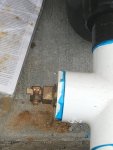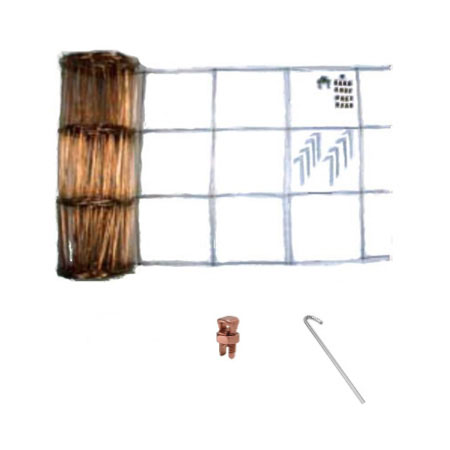Hi all,
I am trying to figure out if my water is bonded correctly. I noticed at my equipment pad, that there is a PB-2008 bonding lug but has no copper wire attached to it.
As background, my pool is an IG gunite with plaster. During the build, I saw them attach a single 8 gauge wire at four places around the pool in a pool. That wire is buried under my travertine paver deck, and that wire is connected to the bonding lugs of my two pumps and my water heater. My deck is travertine pavers over sand (no rebar). I have nicheless LED lights so those do not provide water bonding. And as I mentioned I noticed a pb2008 at my equipment pad that is not connected to anything which is confusing to me (why install it and not connect it?).
My PB has said that with a gunite pool the rebar provides the water bond. I have heard that same thing here on TFP as well, but I have also heard here on TFP that you must have a PB 2008, skimmer plate, or wet niche to properly bond the water. I have also heard that a bonded heater will bond the water too. So I am a bit confused on what is actually the proper way to bond water.
I actually tested the bonding loop with a multimeter set to measure resistance. I got a 100 ft wire and measured resistance along the bonding loop at accessible points:
- I measured no resistance between the pump and heater lugs.
- I measured no resistance to my pool power panel and the pump lugs.
- On one of the four rebar connections with my bonding wire, the rebar is buried in a flower bed (I think the electrician thought the flower bed was going to be decking). I dug to this rebar and measured no resistance from this rebar to my pumps 100 ft away.
- However, I can’t figure out if my water is bonded. My ohmmeter doesn’t read anything (ie no bond?) when I stick one lead in the water with the other lead at the pump lug.
- Also what is puzzling to me is when I measure the resistance from my pump lugs to the PB2008, I also don’t get a reading. So that would imply to me that the water isn’t bonded? It is puzzling because as I mentioned I have read here on TFP that a gunite / plaster shell is porous and thus connections to the rebar are sufficient for water bonding, as is a heater.
Any thoughts on what I am seeing? Ultimately, I think I probably need to just connect the PB2008 to the bonding loop which is very simple but I just want to understand my measurements too.
A separate question - does anyone know how a Jandy Aquapure is supposed to be bonded? I don’t see a bonding lug on the cell.

I am trying to figure out if my water is bonded correctly. I noticed at my equipment pad, that there is a PB-2008 bonding lug but has no copper wire attached to it.
As background, my pool is an IG gunite with plaster. During the build, I saw them attach a single 8 gauge wire at four places around the pool in a pool. That wire is buried under my travertine paver deck, and that wire is connected to the bonding lugs of my two pumps and my water heater. My deck is travertine pavers over sand (no rebar). I have nicheless LED lights so those do not provide water bonding. And as I mentioned I noticed a pb2008 at my equipment pad that is not connected to anything which is confusing to me (why install it and not connect it?).
My PB has said that with a gunite pool the rebar provides the water bond. I have heard that same thing here on TFP as well, but I have also heard here on TFP that you must have a PB 2008, skimmer plate, or wet niche to properly bond the water. I have also heard that a bonded heater will bond the water too. So I am a bit confused on what is actually the proper way to bond water.
I actually tested the bonding loop with a multimeter set to measure resistance. I got a 100 ft wire and measured resistance along the bonding loop at accessible points:
- I measured no resistance between the pump and heater lugs.
- I measured no resistance to my pool power panel and the pump lugs.
- On one of the four rebar connections with my bonding wire, the rebar is buried in a flower bed (I think the electrician thought the flower bed was going to be decking). I dug to this rebar and measured no resistance from this rebar to my pumps 100 ft away.
- However, I can’t figure out if my water is bonded. My ohmmeter doesn’t read anything (ie no bond?) when I stick one lead in the water with the other lead at the pump lug.
- Also what is puzzling to me is when I measure the resistance from my pump lugs to the PB2008, I also don’t get a reading. So that would imply to me that the water isn’t bonded? It is puzzling because as I mentioned I have read here on TFP that a gunite / plaster shell is porous and thus connections to the rebar are sufficient for water bonding, as is a heater.
Any thoughts on what I am seeing? Ultimately, I think I probably need to just connect the PB2008 to the bonding loop which is very simple but I just want to understand my measurements too.
A separate question - does anyone know how a Jandy Aquapure is supposed to be bonded? I don’t see a bonding lug on the cell.




